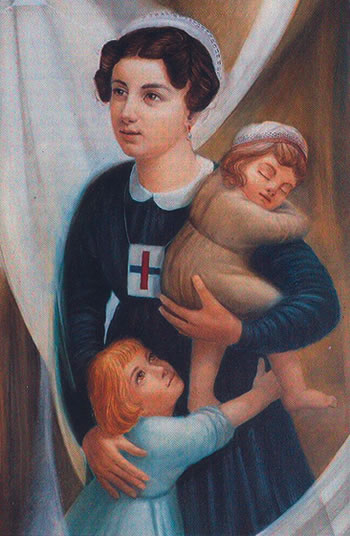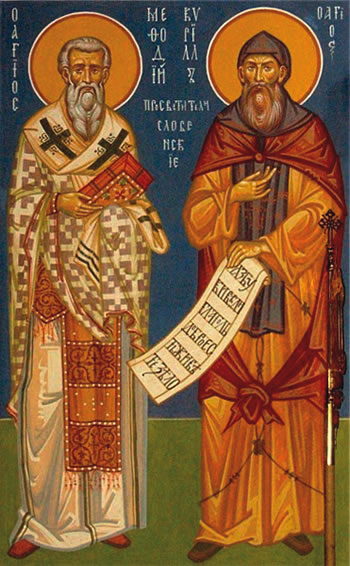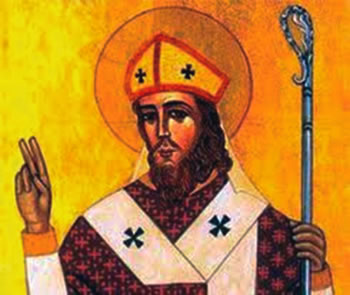February Saints
 Blessed Elizabeth Canori Mora (1774-1825)
Blessed Elizabeth Canori Mora (1774-1825)
Blessed Elizabeth Canori Mora was born in Rome on 21 November 1774 to Tommaso and Teresa Primoli. Her family was well off, profoundly Christian, and diligent in the education of their children. Elizabeth studied with the Augustinian Sisters of Cascia, where she was noted for her intelligence, profound interior life and spirit of penance. Returning to Rome, she led a remarkable life for some years and in 1796 married Cristoforo Mora, a young lawyer. He proved unfaithful and dissolute, and in no time reduced Elizabeth to poverty. She bore him four children, two of whom died in infancy, but she raised her daughters, Marianna and Luciana, by earning a meagre living with her own skills. She also dedicated much time to prayer, the poor and the sick.
In 1801, she was stricken with a mysterious illness which brought her to death’s door. Miraculously cured, she had her first mystical experience. This was followed during her lifetime by other revelations remarkably similar to the message of Fatima. On instructions from her confessor, she wrote down her revelations which fill hundreds of notebook pages. Her home soon became a reference point for many people who turned to her for material and spiritual help. She devoted special care to families in need. For her, family meant a place for each person, a place of fruitfulness of life, of faith, solidarity and responsibility. It was the temple in which she welcomed the “beloved Lord, Jesus of Nazareth” and all those who turned to her. Through self-denial, Elizabeth offered her life for the peace and holiness of the Church, her husband’s conversion and the salvation of sinners.
She became a Trinitarian tertiary in 1807 and came to know and understand profoundly their spirituality, responding with dedication to the vocation of the family and secular consecration. Her admirable human and Christian virtues and the fame of her holiness spread through Rome, Albano and Marino, where she was popularly known as ‘the saint’. She predicted that Cristoforo would eventually repent and become a devout Catholic.
Elizabeth died on 5 February 1825 while being cared for by her daughters. She is buried in Rome in the Trinitarian church of San Carlino alle Quattro Fontane. Shortly after her death, as she had predicted, her husband converted, joined the Trinitarian Third Order and later became a priest of the Conventual Franciscans. She was beatified in 1994.
Blessed Elizabeth, obtain for us the grace to follow what God wants of us.
(Source: Internet – various)
 Saints Cyril & Methodius
Saints Cyril & Methodius
(d.869 and 885)
Saint Cyril, a secular priest, and Methodius, a monk, were born in Thessalonica, Greece, of a senatorial family. About 861, they were sent by Emperor Michael III to convert the Khazars in Russia and were subsequently dispatched to Moravia. They spoke the Slavic language.
Their successes among the Slavs brought them enemies among jealous ecclesiastical leaders in Germany. They appeared before Pope Adrian II, who approved their mission and their use of Slavonic in the liturgy.
Cyril died in Rome in 869.Methodius was consecrated a bishop and became Archbishop of Velebrod. Owing to the continued ambitions and jealousy of the German bishops, in 870, he was deposed and imprisoned, being released two years later. Despite his being cleared by the Pope of unorthodox practices, Methodius was harassed by the German bishops until his death in 885.
Saints Cyril and Methodius, give us a truly evangelical spirit.
(Encyclopedia of the Saints, Matthew, Margaret & Stephen Bunson.1998 Our Sunday Visitor Publishing, Indiana)
Saint Hilary was born in Sardinia, Italy, and was papal legate to the Robber Council of Ephesus in 449. Here he protested the condemnation of Flavian, patriarch of Constantinople, and fought for the rights of the Roman see.
He was used by Pope St Leo the Great on many assignments. When Leo died, Hilary was elected pope and consecrated in 461. His synod at Rome in 465 is the oldest Roman synod for which extensive minutes have been preserved.
In his dealings with the Eastern Church, Hilary circulated a decree confirming the Councils of Nicaea, Ephesus and Chalcedon. He also rebuilt many Roman churches and erected the chapel of St John Lateran. He publicly rebuked Emperor Anthemius I in St Peter’s for supporting the Macedonian heresy. He died in Rome in 468.
Saint Hilary, help us to be zealous in defending our faith.
(Encyclopedia of the Saints, Matthew, Margaret & Stephen Bunson.1998 Our Sunday Visitor Publishing, Indiana)

 Entries(RSS)
Entries(RSS)